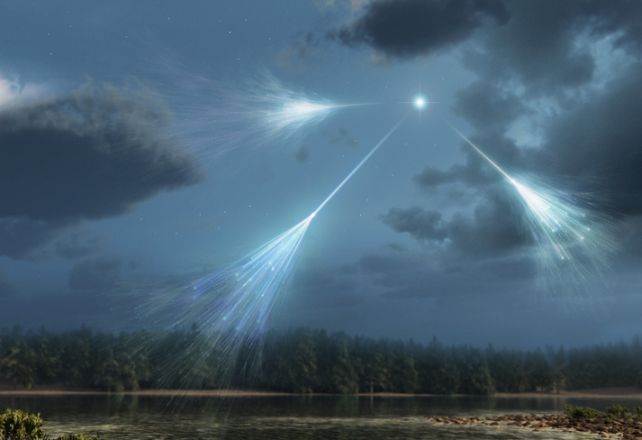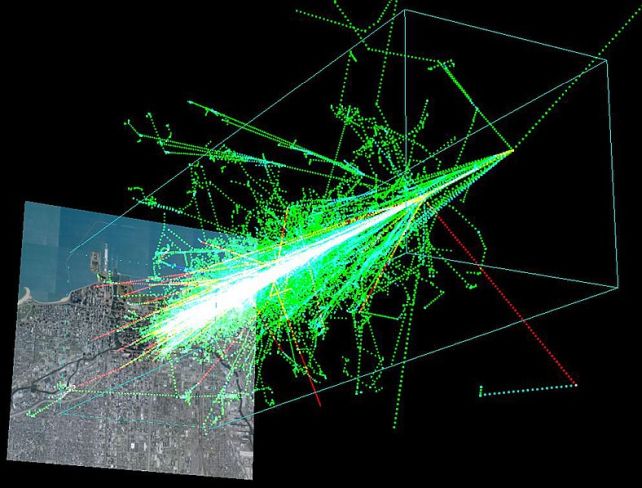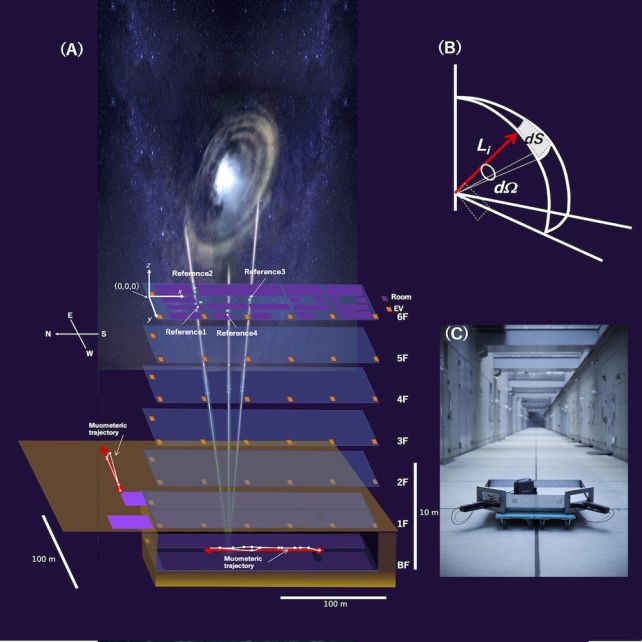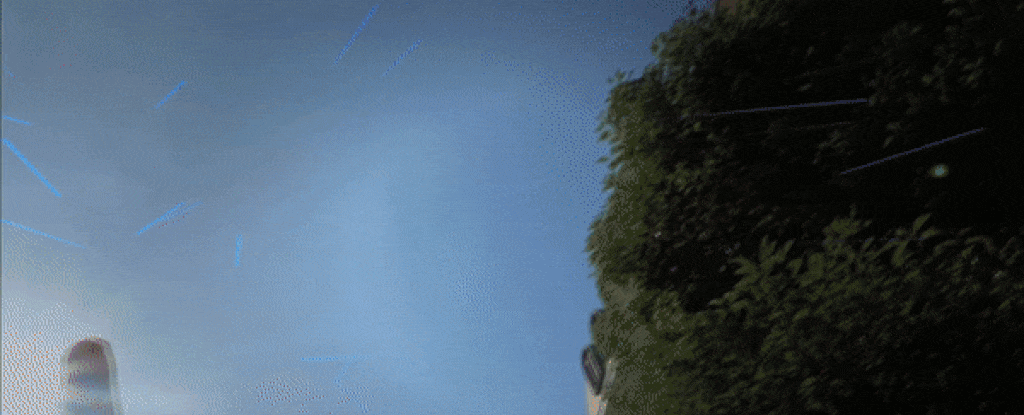Showers of particles that erupt when cosmic rays collide with Earth's atmosphere may have just given us a viable underground navigation system.
Cosmic ray muons raining down on, and partially through, the planet's surface have allowed scientists to calculate an individual's position in a building's basement, a location in which satellite global positioning systems don't work.
This is a big step towards effective navigation underground, underwater, and at high latitudes, all places where GPS fails. According to its designers, it could be used for such purposes as carrying out search and rescue operations, undersea monitoring, tracking in radio quiet zones, and mining.
"Cosmic ray muons fall equally across the Earth and always travel at the same speed regardless of what matter they traverse, penetrating even kilometers of rock," says physicist Hiroyuki Tanaka of the University of Tokyo in Japan
"Now, by using muons, we have developed a new kind of GPS, which we have called the muometric positioning system (muPS), which works underground, indoors, and underwater."

GPS works thanks to a technique called trilateration. GPS satellites orbit Earth, broadcasting signals on carrier radio waves. A receiver – such as a cell phone or the GPS in a car – detects these signals.
The time between the dispatch and receipt of the signal gives the distance between the satellite and the receiver. Multiple distances, and the differences between them, provide the receiver's location. It's a bit like echolocation. Voilà. You are here.
But radio waves are a form of light that is pretty easily blocked. Ever notice how your car's radio cuts out when you go through a tunnel? The carrier waves used by satellite GPS can't penetrate rock or water and encounter difficulties with walls and trees. In addition, GPS doesn't work well at high latitudes; no GPS satellites orbit over the poles, so there's a latitudinal point at which the satellite coverage is just not very good.
For some years, Tanaka and his colleagues have investigated using cosmic ray muons as a sort of stand-in for satellite GPS signals. Muons are subatomic particles created when cosmic rays from sources like distant supernovae or the Sun collide with particles in Earth's atmosphere, and they're pretty much everywhere; a muon is estimated to hit every square centimeter of Earth once a minute or so.

They travel at near-light speed and can penetrate deep underground (they're harmless; you probably have muons zooming through you right now). They've been used to effectively X-ray structures like pyramids, but their ability to penetrate where light cannot gave scientists the idea to try using them for navigation.
The idea is a lot like GPS. Four muon-detecting reference stations are placed above ground, and the muon-detecting receiver is placed either on a person or underground. For instance, muPS was initially developed to detect how volcanic activity or tectonic movement changes the seafloor.
As a shower of muons falls, they first travel through the reference detectors before making their way to the receiver. The time lag between the reference detectors and the receivers allows for trilateration, giving the receiver's coordinates. However, the first muPS system had to be wired, which is not very practical for someone moving about. Now, the team has taken the system wireless.
The reference detectors and the receiver were all connected to a synchronized, precision quartz clock. One of the reference detectors was placed on the sixth floor of a building while a person carrying the receiver moved around in the basement. The new system is called the muometric wireless navigation system (MuWNS).

It's not quite there yet. The receiver's coordinates were not tracked in real-time; the team took measurements and used them to reconstruct the route the person took through the basement corridors. They were able to do so with reasonable accuracy, but it could get better, Tanaki says.
"The current accuracy of MuWNS is between 2 meters and 25 meters (6.5 and 82 feet), with a range of up to 100 meters, depending on the depth and speed of the person walking. This is as good as, if not better than, single-point GPS positioning aboveground in urban areas," he explains.
"But it is still far from a practical level. People need 1-meter accuracy, and the key to this is the time synchronization."
In other words, it needs better clocks, such as the chip-scale atomic clocks that measure time by the regular spin transitions of cesium atoms changing energy states.
Such clocks are currently too expensive, and they may not remain so. Meanwhile, the team hopes to work on scaling down the size of the rest of the equipment to something that can fit in the hand.
"With these new results," they write in their paper, "it is clear that with further improvements, MuWNS can be adapted to improve autonomous mobile robot navigation, positioning, and other underground and underwater practical applications."
The research has been published in iScience.
